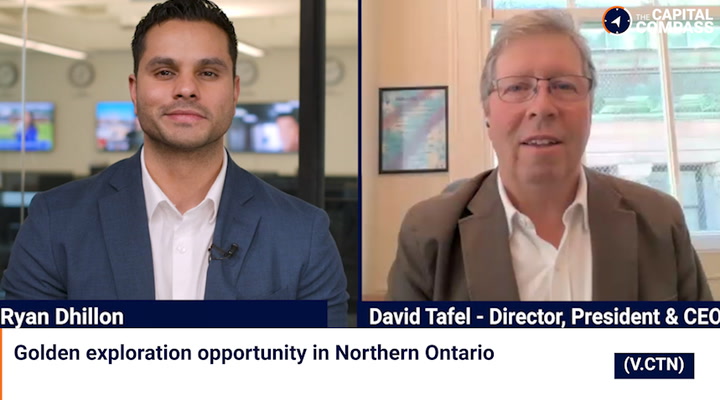Star Navigation bridges the gap between flight experience and flight safety.
In the aerospace industry, the Ontario-based aviation safety tech company offers both hardware and software solutions that work in real-time.
The company continues to gain traction with its technology across multiple segments of the aviation sector.
To learn a little more about the company, especially its unique technology, I’d like to welcome back the company’s Director and Investment Strategy Officer, Anoop Brar. Thanks for stopping by today.
TMH: Let’s start by quickly recapping your technology. You’ve had a great reception from clients. How does it differ from any potential competitors, and why is it appealing?
AB: Star Navigation is innovative. It’s leading edge. We are actually doing something that other technology companies aren’t doing. They’re taking data post-flight. What we are able to do is have edge computing. We are able to compute. Computers and sensors on the aircraft in flight while it’s still en route and that is what distinguishes us from everybody else.
TMH: How does it differ from any potential competitors, and why is it appealing?
AB: Absolutely, yes. So we have a trademark, it’s called the ISMS, which is the Inflight Safety Monitoring System, and the key word here is in flight. That’s what really distinguishes us. It’s being able to capture information from the different databases on an aircraft, being able to analyze that, and what’s most important is the world of artificial intelligence, edge computing, and big data. We’re able to use the analysis and algorithms on board to do these analyses. What helps with the aviation industry is that we can actually do benchmarking while an aircraft is flying. Find out when has an aircraft parameter exceeded its standard operating procedures, send alerts and transmissions through iridium satellites and then once the information comes on the ground, just like a stock market, we can start building trends in real-time, so the engineers on the ground can use tools, artificial intelligence algorithms to detect when an anomaly could potentially happen, and that’s how we optimize safety, performance and profitability for these airlines.
TMH: I’ve heard, if your technology was on every commercial airliner, there would be no more mysteries or unknowns when it came to air accident investigations, that it would make determining any cause much easier.
AB: Because we are able to take the data, analyze it in flight, transmit the key parameters through satellite to the ground, and those key parameters include everything from engines, the airframe, pilot information, how an aircraft is being flown and positional data. So I know you’re kind of referring to the Malaysia MS 370, which went meant missing, but we would have been able to figure out what went wrong and that data from the black box would’ve been able to stream directly from iridium satellites to the operations. So it would’ve helped with the post-investigative analysis. Most importantly, we would’ve been able to get key positional data while an aircraft, unfortunately, went into the sea, and that would’ve helped so many millions of dollars from being spent by locating the black box, which is still post-analysis. We could have done that in flight
TMH: Like we were talking about before, it doesn’t matter where that plane is, whether it’s over the most desolate part of the ocean or an unpopulated jungle underneath that data is still being tracked, right?
AB: It’s being tracked, it’s being analyzed, it’s being transmitted, and the data comes into the hands of the operators. So it doesn’t really go directly to the OEMs. The Boeings, the Airbuses of the industry, which are the manufacturers or the engine manufacturers like the Rolls Royce, the GEs, the Pratt & Whitney’s, it’s actually being owned by the airline and rightfully so and so they can now analyze the data and use their own discretion in terms of how they can optimize their own operations.
TMH: The technology itself, you as a company have hopes that it can transcend the aviation industry itself eventually and be used in other applications, correct?
AB: We currently are. You might have heard about an LOI that we signed in Kenya for the LAPSSET program, and LAPSSET is very interested in us for tracking their marine, their ships, the trains, the boats, all the different cargo that’s actually flowing through the sub-Saharan continent and that’s really important. So we, as a technology company, are able to get key data parameters and give it in the hands of the operators. So in the case of LAPSSET, we are helping them with positional data. We’re helping them with geofencing so that some submarines don’t go into territories that they’re not supposed to. And so our technology can be applied in many, many different fields.
TMH: Speaking of the technology and the AI functionality of the whole thing, why should investors be excited about the inequality of it?
AB: AI is not really just a buzzword that we just throw around. AI is so critical. You might have seen everything from ChatGPT to AI now creating videos and photos. Now AI is something that is the future, and to create that future, we need data, and Star Navigation has the capabilities of actually capturing that data and being able to analyze that and reduce the manual labour process. We implement artificial intelligence models and predictive maintenance algorithms to help us optimize that because there are a lot of calculations that, as humans, we can’t do, but artificial intelligence and machine learning technologies which exist now are able to further enhance that for us.
TMH: So you, you mentioned AI is the future. Where does the technology go from here?
AB: From here? Innovation is what leads to growth, and for Star Navigation to grow, we need to constantly innovate on the whole entire value chain of the company. Everything from marketing, in terms of pricing, how do we make sure that the pricing is more affordable to the airlines pivoting towards perhaps a subscription SaaS model. Then it comes to the technology itself. How can we make sure that this network edge technology, this computing power that is installed on an aircraft, is always the leading edge? We’re always in front of the competitors, and not only that, but then we can implement blockchain technology. With blockchain now, you will have the integrity of the data that’s coming off an aircraft. So regulators know that the data that’s coming off, the reports that are coming, they’re integral. They’re not compromising on safety, they’re not compromising on anything else that these aviation companies are putting forward to the regulators. There are companies like Starlink. Starlink is providing continuous streaming of data. Imagine if we could now continuously stream all the data and so there are endless opportunities, endless innovations that we can get into and we’re pretty excited to do that.
TMH: We’ve talked about the future, the short-term future, and all the rest of 2023 here. What should investors be excited about?
AB: Short-term, closing on the LOIs that we have. Closing and getting more sales, getting installations done. In my last interview, I talked about the road to 300. We’re very excited about getting 300 orders this year, and to do that, we are aggressively marketing ourselves. We’re not only in Africa but on other continents as well. We have opened doors to the LAPSSET program. That LAPSSET actually got us more interested in other regions in Southeast Asia as well as in Africa. So when it comes to tracking marine tracking of analysis of the aviation industry, I think all we need right now is to be able to put ourselves out there, showcase the true value, and we are ready to take on the aviation industry.
TMH: Is there anything else we haven’t touched on right now that is important?
AB: No, I think we touched on a lot of things, and it’s the power of the technology that we have I think investors should be very confident in what they have invested in, and new investors should know that we are at the forefront of innovation, we are at the forefront of making sure that the legacy systems that the airline industry is currently using are being enhanced by real-time data that can now come in the hands of these operators.
Thanks for coming by The Market Herald today, Anoop and taking time out of your day for us. Come back any time.
We’ve been speaking with Star Navigation Director and Investment Strategy Officer Anoop Brar here in the Market Herald studio.
The company trades on the Canadian Securities Exchange under the ticker symbol SNA. You can visit them at https://www.star-navigation.com/ for more information.
Thanks for watching Top Line. In Vancouver, I’m Simon Druker. We’ll see you next time.
FULL DISCLOSURE: This is sponsored content issued on behalf of Star Navigation Systems, please see full disclaimer here.




